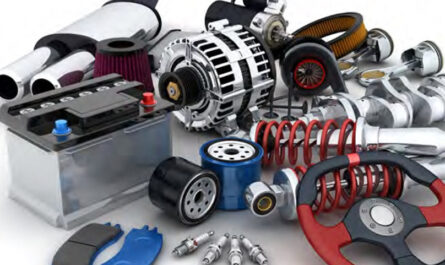Wind power is one of the leading sources of renewable energy across the world. However, with the increasing size and numbers of wind turbines being installed, the operation and maintenance of these systems is becoming more complex. Unplanned downtime can lead to huge financial losses. This is where condition monitoring systems for wind turbines play a vital role in optimizing performance through predictive maintenance.
The Need for Wind Turbine Condition Monitoring
Modern multi-megawatt wind turbines are complex machines with several moving parts that are subjected to dynamic loading and harsh environmental conditions. Any faults or component deterioration, if left undetected, can lead to catastrophic failures resulting in the turbine shutting down. This reduces the annual energy production and increases operational expenditures significantly. Condition monitoring allows continuous supervision of the turbine health to detect anomalies at an early stage before they escalate into major issues. This facilitates planned downtime for maintenance instead of unplanned breakdowns.
Regular inspections are not feasibly possible for offshore wind farms located several kilometers away from the coast. Remote condition monitoring via wireless networks enables constant vigil even for inaccessible offshore assets. The data collected aids in reliability-centered maintenance by prioritizing component replacement based on criticality analysis. This brings financial gains through higher asset availability and energy output.
Components Monitored and Sensing Technologies
Various subsystems within a wind turbine such as the gearbox, generator, blades, and other mechanical and electrical components are critical to its performance. Condition monitoring focuses on these assemblies to catch emerging faults:
Gearbox – One of the most failure-prone parts, the gearbox health is monitored using vibration sensors, oil debris sensors, and thermocouples. Any increase in amplitude or change in frequency of the vibration spectra hints at gear or bearing wear. Oil analysis detects wear metal particles indicative of friction within the drive train.
Blades – Fiber optic strain gauges bonded to the blades continuously track stresses, cracks, or damage from environmental impacts. Acoustic emission sensors listen for characteristic sounds emanating from flaws in the composite material.
Generator – Stator current and vibration signature analysis track the electric motor function. Insulation resistance tests verify winding integrity to prevent short-circuits.
Other assets – Ultrasonic thickness gauges examine corrosion patterns in the tower structure. Temperature sensors in Transformer Oil Monitors detect overheating risks in the power electronics.
The data collected from these intelligent sensors is wirelessly transmitted to a central SCADA system for detailed analysis by engineering specialists. AI and predictive analytics additionally process the historical information to foresee future fault scenarios.
Data Analytics – Key to Predictive Maintenance
Large volumes of operational and condition monitoring data are generated every minute from sensors embedded in a wind farm network. This raw information needs systematic processing to extract meaningful insights. State-of-the-art data analytics platforms collect, store and analyze the sensor readings using advanced algorithms. They recognize patterns indicative of deteriorating components even before symptoms surface.
Remaining useful life predictions alert maintenance teams in advance to proactively schedule inspections and replacements. This predictive strategy helps optimize part inventory while minimally impacting energy generation through planned downtime execution. Data-driven failure mode analysis further enhances reliability by uncovering weak links in the assembly design requiring improvements. Overall, big data fuels more effective maintenance planning leading to increased asset productivity and electricity supply stability.
Remote Monitoring and Control Solutions
Modern Condition Monitoring Systems leverage cloud-based technologies for scalable remote access to turbine health parameters from any location worldwide. Secure industrial IoT platforms integrate on-site sensors, edge gateways and centralized databases facilitated by cellular or satellite networks. Users can remotely commission new turbine fleets, view real-time operational displays and analyze faults using intuitive dashboards.
Web-based portals powered by mobility apps extend oversight even on-the-go via smartphones and tablets without needing proprietary software. Remote assistance using augmented reality guide technicians through complex repairs. Further, machine learning models trained on cloud servers enable self-diagnosis without human intervention for preemptive maintenance initiation. This lowers operating expenditures through reduced man-hours and truck rolls for inspection.
The Future of Wind Farm Surveillance
Condition monitoring capabilities continue to rise with innovative sensing and data driven solutions. Advanced ultrasonic techniques, fiber optic systems and artificial intelligence will enhance anomaly detection sensitivity. Drone-mounted thermal cameras will inspect hard-to-reach areas like blade tips. Battery-powered wireless vibration motes mounted within components will transmit real-time health based on self-learning algorithms. Edge intelligence at local hubs will prescreen and compress data to optimize transmission over bandwidth constrained rural networks.
The future also lies with fully autonomous turbines that self-report faults using 5G networks. Predictive maintenance will evolve into prescriptive strategies recommending optimal part replacement timings with 3D printed components delivered via drones. As wind power scales to meet global energy goals, reliable remote asset health management through advanced condition monitoring will keep this carbon-free source spinning sustainably.
*Note:
1. Source: Coherent Market Insights, Public sources, Desk research
2. We have leveraged AI tools to mine information and compile it



